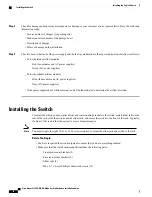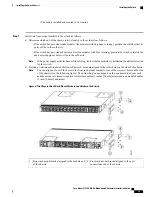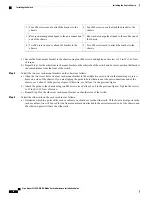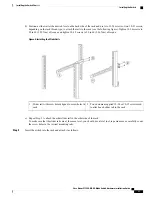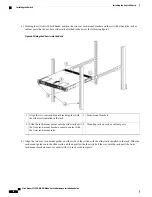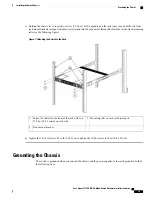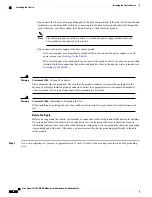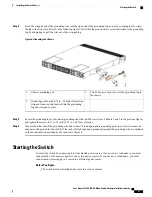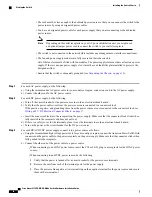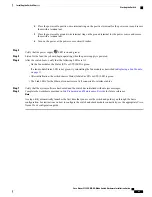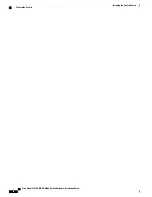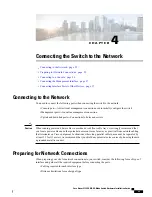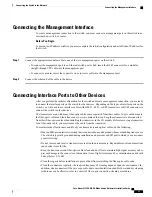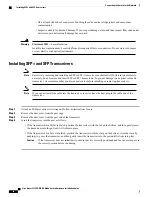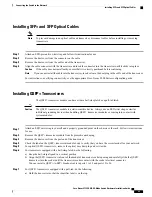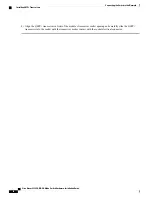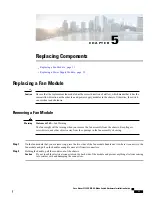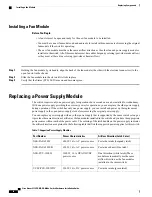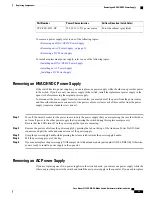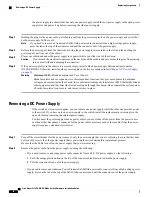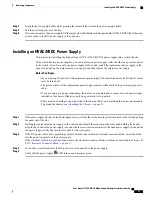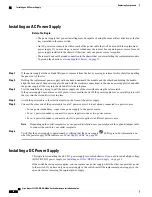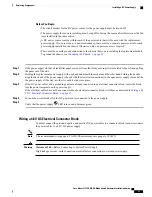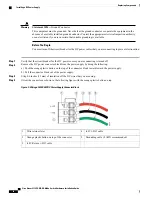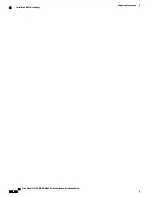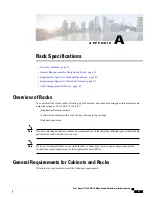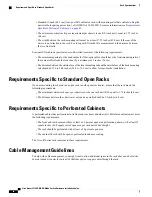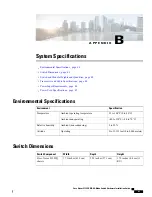
•
Do not touch the ends of connectors. Touching the ends can leave fingerprints and cause other
contamination.
•
Inspect routinely for dust and damage. If you suspect damage, clean and then inspect fiber ends under
a microscope to determine if damage has occurred.
Statement 1051
—
Laser Radiation
Invisible laser radiation may be emitted from disconnected fibers or connectors. Do not stare into beams
or view directly with optical instruments.
Warning
Installing SFP+ and SFP Transceivers
Excessively removing and installing an SFP or SFP+ transceiver can shorten its life. Unless it is absolutely
necessary, do not remove and insert SFP or SFP+ transceivers. To prevent damage to an optical cable and
transceiver, we recommend that you disconnect cables before installing or removing transceivers.
Note
If you cannot install the cable into the transceiver, insert or leave the dust plug in the cable end of the
transceiver.
Note
Step 1
Attach an ESD-preventive wrist strap and follow its instructions for use.
Step 2
Remove the dust cover from the port cage.
Step 3
Remove the dust cover from the port end of the transceiver.
Step 4
Insert the transceiver into the port as follows:
•
If the transceiver has a Mylar tab latch, position the transceiver with the tab on the bottom, and then gently insert
the transceiver into the port until it clicks into place.
•
If the transceiver has a bale clasp latch, position the transceiver with the clasp on the bottom, close the clasp by
pushing it up over the transceiver, and then gently insert the transceiver into the port until it clicks into place.
If the transceiver does not install easily, ensure that it is correctly positioned and the tab or clasp are in
the correct position before continuing.
Caution
Cisco Nexus 9332PQ NX-OS-Mode Switch Hardware Installation Guide
28
Connecting the Switch to the Network
Installing SFP+ and SFP Transceivers

